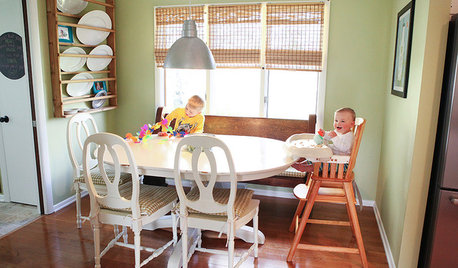Another Interesting Lep Day!
MissSherry
12 years ago
Related Stories

HOUSEKEEPINGAnother Independence Day: When Kids Can Do Their Laundry
Set yourself free and give your child a valuable life skill at the same time
Full Story
BATHROOM DESIGNTake Your Bathroom Walls Into Another Realm
Being practical spaces, bathrooms sometimes can be bland. Here are imaginative wall treatments that add personality
Full Story
MOVINGSaying Goodbye to One Home and Hello to Another
Honor your past and embrace your future with these ideas for easing the transition during a move
Full Story
EVENTSDon't Throw Away Another Household Item Before Reading This
Repair Cafe events around the world enlist savvy volunteers to fix broken lamps, bicycles, electronics, small appliances, clothing and more
Full Story
HOUSEKEEPINGDon't Touch Another Stain Before You Read This
Even an innocent swipe with water may cause permanent damage. Here's what to know about how rugs and fabrics react
Full Story
ROOM OF THE DAYRoom of the Day: A Laundry So Cheery, Wash Day Is Wonderful
Pretty paint and playful touches banish chore-day blahs in a laundry room designed for a magazine’s Idea House
Full Story
BATHROOM MAKEOVERSRoom of the Day: See the Bathroom That Helped a House Sell in a Day
Sophisticated but sensitive bathroom upgrades help a century-old house move fast on the market
Full Story
LIVING ROOMSRoom of the Day: Addressing the Green Piano in the Room
A homeowner’s favorite furniture item presents an interesting design challenge and reveals a fascinating history
Full Story
LIVING ROOMSRoom of the Day: New Warmth for a Contemporary Home
Deep jewel tones, rich textures and interesting shapes make this open living room an inviting space
Full Story







bob_71
Mary Leek
Related Professionals
West Milford Landscape Architects & Landscape Designers · Hartford Landscape Contractors · Arlington Landscape Contractors · Burien Landscape Contractors · Inglewood Landscape Contractors · Tavares Landscape Contractors · Oxon Hill Landscape Contractors · Arcadia Fence Contractors · Burbank Fence Contractors · Evanston Fence Contractors · Lake Forest Fence Contractors · Oceanside Fence Contractors · Wauconda Fence Contractors · San Ramon Window Contractors · Wilmette Window ContractorsMissSherryOriginal Author
mboston_gw
MissSherryOriginal Author
christie_sw_mo
caterwallin
MissSherryOriginal Author
KC Clark - Zone 2012-6a OH
MissSherryOriginal Author
KC Clark - Zone 2012-6a OH
MissSherryOriginal Author
Tony G
MissSherryOriginal Author